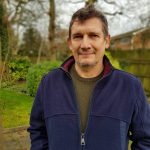
Achaladeva
Président
Je suis tombé amoureux de Guhyaloka lors de ma première visite en 1993 – le silence, la forêt, les vues magnifiques. Après avoir été ordonné ici en 1995 et avoir fait un certain nombre de retraites solitaires, j’ai rejoint la communauté en 2006, travaillant à l’entretien, à la gestion des terres et à certains projets de construction, y compris l’achat et le développement d’Uttaraloka. J’ai quitté la communauté en 2013, mais j’ai continué à revenir pour aider quand je le pouvais. Lorsque Vajrasiddhi a décidé de partir au début de l’année 2022, j’ai eu la forte intuition que je pouvais venir ici et assumer le rôle de président, ce que j’ai fait à partir de juillet 2022. Guhyaloka est un endroit magnifique et, grâce aux nombreuses années de pratique et de retraites d’ordination, il est devenu un lieu sacré pour de nombreux hommes de l’Ordre et du mouvement Triratna. C’est un privilège de faire partie de la communauté qui veille sur cet espace sacré et le protège.
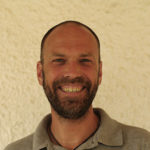
Amoghapala
Bureau et développement
Après avoir quitté Bruxelles en août 2019 pour participer au Dharma Life Course à Adhisthana, j’ai décidé de rejoindre la communauté de Guhyaloka en janvier 2020 afin de travailler à la maintenance du centre. Guhyaloka est un lieu magnifique et paisible qui me donne du temps et de l’espace pour approfondir ma pratique du Dharma.
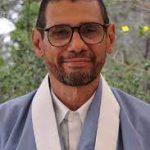
Achalamati
Maintenance
Vivre en Guhyaloka depuis juillet 2022.
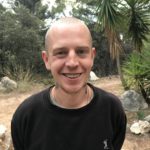
Amalakirti
Cabines solitairesJ’ai commencé à m’intéresser à Triratna après avoir fait un peu de méditation de base dans le cadre d’un cours de TCC du NHS. J’ai ensuite commencé à fréquenter le groupe Triratna à Eastbourne. Je suis devenue Mitra en 2018 et j’ai demandé l’ordination peu de temps après. J’ai fait du bénévolat à Evolution Arts à Brighton pendant deux ans, puis en octobre 2020, j’ai eu l’occasion de venir à Guhyaloka et j’ai pensé que ce serait un excellent endroit pour approfondir ma pratique.
J’ai été ordonné en 2023.
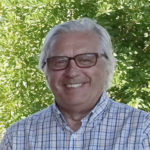
Manjuvajra
Trésorier et gardien de l’UttaralokaAprès avoir enseigné et développé Triratna pendant près de cinquante ans en Europe et aux États-Unis, je me suis « retiré » à Uttaraloka pour explorer la « vie dans la forêt » et soutenir les installations permettant à d’autres personnes de me rejoindre.
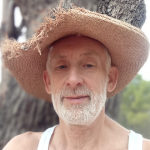
Vajranatha
Travail sur le terrain et ce qui s’y rapporteJe suis venu à Guhyaloka pour la première fois en 1986 et j’ai été immédiatement inspiré par cet endroit.
Après avoir passé de nombreuses années au Venezuela, j’ai rejoint la communauté pour un an en 1999. J’ai fait de nombreuses retraites ici et j’associe cette vallée à un sentiment de renouveau spirituel.
Je suis revenue ici en août 2020 et depuis, je m’occupe des terrasses d’amandiers et d’oliviers et d’autres petites tâches pour aider à l’entretien général de nos facilités.
The Guhyaloka Community was founded soon after the purchase of the property in 1986. At first it was a band of volunteers working under a very tight budget and difficult physical conditions to make El Morer and Bhante’s Bungalow habitable, and to build, from scratch, the retreat facilities for the following year’s Ordination Course. It was a deeply challenging time, but the work was completed on time and the first Course went ahead as planned. Since then there has always been a residential support community which is responsible for the maintenance and development of the facilities, including over twenty buildings and 60 hectares (150 acres) of wild forest with some cultivated terraces of almonds and olives. They also service the ordination courses and other retreats, look after those on solitary retreat, providing them with food and other support, and transporting everyone in and out of the valley. Although the hope is to have a minimum of six men living at Guhyaloka there are often only four or five – so it is a fairly demanding life but even so the community members manage to keep up an active spiritual life of meditation and study.
Community members receive full board and lodging and a small stipend to cover personal expenses as well as medical insurance. The nucleus of the community is ‘Bhante’s Bungalow’ which has a kitchen, a sitting room, an outdoor dining space and a couple of rooms for visitors. Nearby, scattered among the pine trees there are a number of wooden huts; one of which is used as the community shrine room and the others are for personal rooms. During the winter, if it is not in use, the community sometimes decamps to the relatively more comfortable accommodations at the retreat centre. The community follows a daily program of meditation, work, and puja as well as eating meals together, and a few meetings in the evenings for study and community business.
Generally speaking the community is made up of members of the Triratna Buddhist Order or men training to join the Order, and for historical reasons English is the primary language. Many of the community members have been from the UK. However since Britain has left the EU we are hoping that we will become much more internationally diverse. Although it is much more difficult now for British men to live at Guhyaloka for longer than three months we are hoping that after a couple of shorter visits we may be able to work towards obtaining full residency. We are presently (Early 2021) looking for two more men – preferably Order members – to join the community.
One of the original components of Sangharakshita’s vision for Guhyaloka was that it would also house a ‘vihara’ – a small community of men dedicated to spiritual practice with no other responsibilities – and over the decades there have been various manifestations of such a community. There has been a variety of personnel and regimens but they have all had a limited lifetime – although often lasting several years. Uttaraloka represents the latest incarnation of this ideal – albeit an ongoing temporary community – that we are calling a ‘forest hermitage and retreat‘.
Problème d’affichage des publications Facebook. Mise en cache de sauvegarde en cours.
Cliquer pour afficher l’erreur
